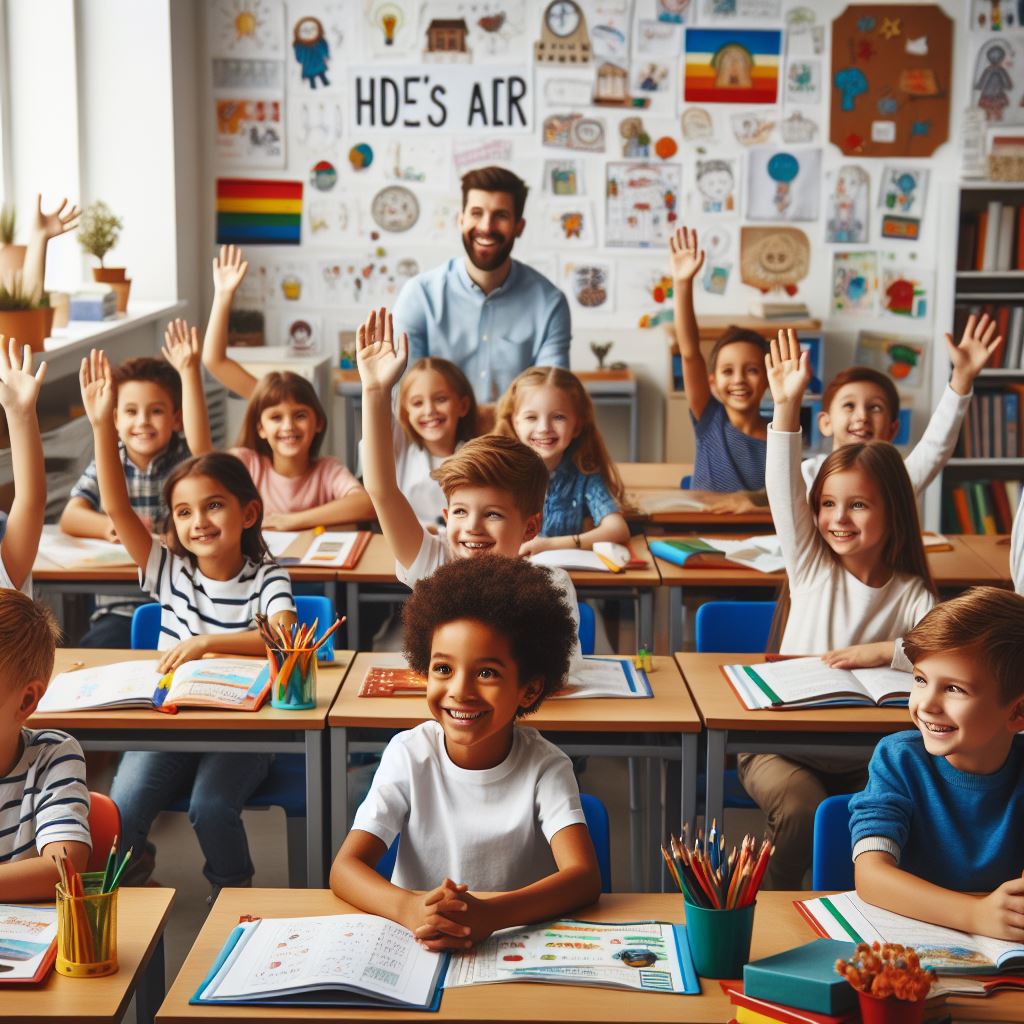
As educators, the importance of establishing a serene and concentrated environment for our students can never be overstated. Calmness and focus form the cradle that nurtures the learning process, enabling students to absorb knowledge more effectively. In the bustling environment of education today, the challenges teachers face can make this task seem daunting. Yet, through intention and action, teachers can generate an atmosphere that not only fosters academic success but also promotes a supportive space for emotional and social development.
Creating an educational sanctuary that champions peace and attention begins with the physical layout and design of the classroom. It’s well understood that environment plays a significant role in cognitive function and emotional well-being. When students step into the classroom, they should perceive it as a place of order and comforting predictability, where every element is purposefully chosen to reduce stress and enhance focus.
The tone is set the moment a student walks through the door. The colors of the walls, for instance, should be calming and selected with care; soft, neutral tones or cool colors like pale blues and greens are known to have a soothing effect on the mind. Overly bright or harsh colors may be distracting and can inadvertently heighten anxiety levels.
A harmonious classroom also depends on how things are arranged. Each desk, shelf, and piece of furniture should be placed to minimize congestion and optimize flow. Clear walkways and organized materials prevent the physical clutter that can lead to a cluttered mind. Importantly, classrooms must cater not to an abstract ideal of organization but to the specific needs of the students who inhabit them daily. Desks arranged in a circle might foster a sense of community and open discourse for one group, while rows or individual pods could benefit another by reducing distractions and creating personal space.
The environment must be adaptable, able to morph to suit different activities, whether it’s group discussion, individual work, or interactive learning. Flexible seating options, such as stability balls, bean bags, or standing desks, can also cater to different learning preferences, allowing students to find their optimum seat for concentration.
The inclusion of natural elements can have a profound effect on students’ ability to find calmness. A view of the outdoors, where possible, or adding plants to the classroom can introduce a touch of nature that refreshes the mind. The benefits of natural light cannot be overlooked either. It elevates the mood, boosts alertness, and can help in reducing the feeling of being enclosed which artificial light might create.
The physical environment is but one facet of the serene classroom. Students should also be involved in the creation and maintenance of this space. Assigning tasks related to the upkeep of the room imparts a sense of responsibility and engenders respect for the shared learning area. When learners feel they are contributing to the harmony of their surroundings, they are more invested in maintaining order and calm within it.
Displaying student work not only personalizes the environment but also serves as a visual reminder of what can be achieved through sustained effort and focus. This acknowledgment of their achievements can boost their confidence and motivate them and their peers to strive for progress.
Verbal and visual cues can subtly reinforce the values of tranquility and attentiveness. Catchphrases on the walls or simple signs that can be flipped to indicate ‘quiet time’ or ‘discussion time’ can help guide behavior without a teacher needing to raise their voice. The decor should not only be aesthetic but functional, serving as a constant, gentle nudge towards peacefulness and concentration.
Dynamic Techniques to Enhance Focus
Capturing and maintaining the attention of students in the classroom is a multi-faceted endeavor, requiring not just static strategies but a dynamic approach that evolves over time. In fostering concentration, teachers must be innovators, consistently introducing new techniques and practices that cater to the changing needs of their students. Focus is a skill that, much like any other, can be honed and improved through regular, mindful practice.
Incorporating mindfulness and meditative practices is an increasingly popular approach. Brief sessions of guided imagery or breathing exercises can dramatically decrease stress levels, bringing students’ minds to a more receptive state. By beginning or transitioning lessons with such practices, teachers can help to clear the mental clutter that may interfere with learning.
Another dynamic technique is the use of focused academic exercises that are purposefully designed to strengthen the students’ attention span incrementally. For instance, sustained silent reading can start with short intervals and gradually build up to longer periods, training students to engage with a text without becoming easily distracted. Similarly, complex problem-solving activities that require deep thought and perseverance can be introduced in a step-by-step manner, allowing students to grow accustomed to the mental rigor involved in maintaining attention over extended time frames.
Physical activities can also play a central role in enhancing focus. Incorporating short, classroom-friendly physical exercises or movement breaks not only helps to expel pent-up energy but allows students to return to their desks more capable of concentrating. Such activities might include brief stretching sessions, yoga poses designed for the classroom, or five-minute dance breaks to invigorate and reset the brain.
Teachers may also consider the use of technology, like apps and games that are specifically designed to improve concentration and cognitive flexibility. These can be woven into lessons in a controlled way that ensures they act as tools for improving focus rather than becoming distractions themselves. These digital aids often come with built-in metrics for progress tracking, providing tangible data for students to see how their focus is developing over time.
Strategies for Sustaining Concentration
One essential strategy is goal-setting. Defining clear, achievable objectives gives students a sense of direction and purpose. When students understand ‘why’ they are undertaking a task, they are more likely to engage fully and concentrate on completing it. Goals can be set for both short-term activities and long-term learning outcomes, encouraging students to stay focused not just in the moment, but also to maintain that concentration throughout the semester or academic year.
Implementing these goals requires regular reflection and adaptation. Reflective practices could be as simple as students recording what they’ve learned at the end of a lesson, or as complex as writing a self-assessment of their progress towards goals at the end of a unit.
In terms of resilience and delayed gratification, educators can employ challenges that encourage students to persist despite difficulties. This might involve complex tasks that require several steps to complete or problems that don’t have obvious solutions. Through these, students learn that concentration can sometimes be a struggle, but it’s a struggle worth enduring.
The role of continuous encouragement cannot be emphasized enough. People thrive on positive reinforcement, and students are no different. Specific praise for effort, improvement, and perseverance serves to validate the students’ hard work and reinforces the behavior that led to success. Such encouragement should not be limited to academic achievements but should also acknowledge the development of focus and concentration abilities.
Another pivotal element in sustaining concentration is engendering a growth mindset within the classroom. This involves shifting students’ perspectives to view challenges and mistakes as opportunities to learn and grow, rather than as failures. A student who believes that their concentration and intelligence can improve with effort will be more likely to apply themselves diligently to their work. Teachers can foster this mindset by modeling it themselves, sharing their learning experiences, and openly discussing strategies for overcoming concentration difficulties.
Providing feedback is a crucial strategy for sustaining concentration. Constructive feedback allows students to understand the correlation between their focused efforts and outcomes. It helps them to identify what strategies are working and where they might need additional support.

